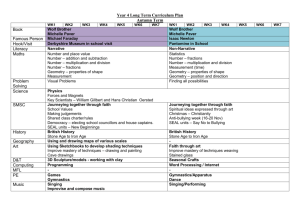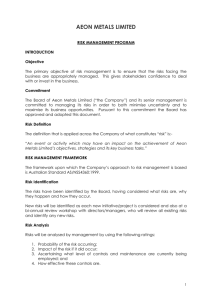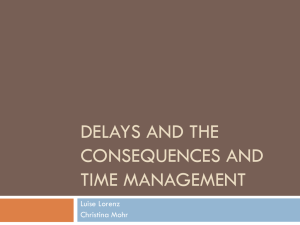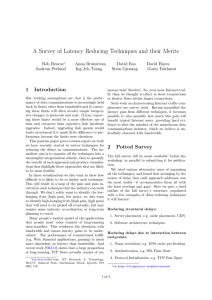Performance Related Changes and their User Impact
advertisement
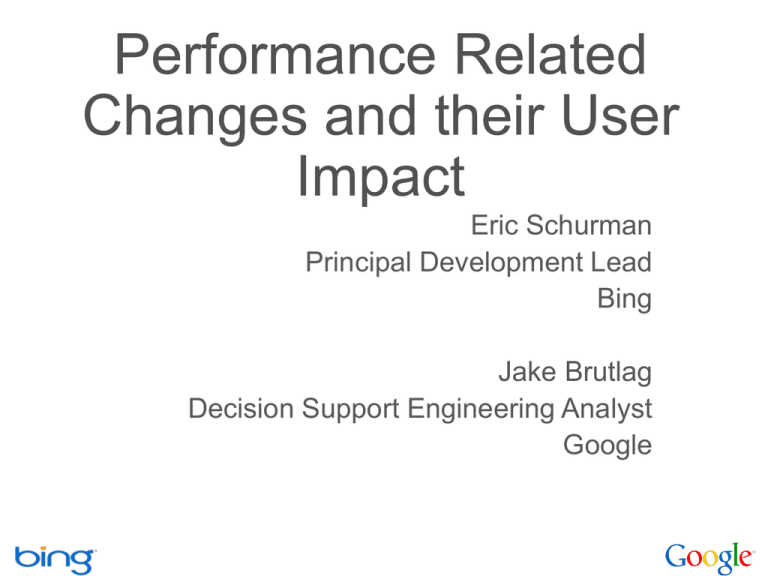
Performance Related Changes and their User Impact Eric Schurman Principal Development Lead Bing Jake Brutlag Decision Support Engineering Analyst Google Experiments • Server Delays (Microsoft and Google) • Page Weight Increases • Progressive Rendering Server-side Delays Experiment • Goal • Determine impact of server delays • Methodology • • • • Delay before sending results Different experiments with different delays Small number of users Monitor negative impact 50ms 200ms -0.3% -0.4% 500ms -0.6% -1.2% -1.0% -0.9% 1000ms -0.7% -0.9% -2.8% -1.9% -1.6% 2000ms -1.8% -2.1% -4.3% -4.4% -3.8% - Means no statistically significant change cre l ase ick in m s) oC et (in Tim on isfa c ti Sat Dis t in Qu c t e ri es/ Us Qu er e ry Re fin em en Re t ven ue /U ser An yC lick s Server Delays Experiment: Results 500 1200 1900 3100 • Strong negative impacts • Roughly linear changes with increasing delay • Time to Click changed by roughly double the delay Google Web Search Delay Experiments • A series of experiments on a small % search traffic to measure the impact of latency on user behavior • Randomly assign users to the experiment and control groups (A/B testing) • Server-side delay: • Emulates additional server processing time • May be partially masked by network connection • Varied type of delay, magnitude (in ms), and duration (number of weeks) Search Traffic Impact Type of Delay Pre-header Pre-header Post-header Post-header Post-ads Delay (ms) 50 100 200 400 200 Experiment Duration (weeks) Impact on Average Daily Searches Per User 4 4 6 6 4 Not measurable -0.20% -0.29% -0.59% -0.30% • Increase in abandonment heuristic = less satisfaction • Abandonment heuristic measures if a user stops interacting with search engine before they find what they are looking for • Active users (users that search more often a priori) are more sensitive 0.2% -0.8% -0.6% -0.4% -0.2% 0% 200 ms delay 400 ms delay -0.22% -0.36% -0.44% -1% daily searches per user relative to control Impact of Post-header Delays Over Time -0.74% actual trend wk1 wk2 wk3 wk4 wk5 wk6 delay removed 0.2% -0.08% -0.8% -0.6% -0.4% -0.2% 0% 200 ms delay 400 ms delay -0.21% -1% daily searches per user relative to control Persistent Impact of Post-header Delay actual trend wk3 wk4 wk5 wk6 wk7 wk8 wk9 wk10 wk11 Page Weight Experiment • Goal • Determine impact of a heavier page. • Isolate bytes over the wire cost, not layout costs, etc. • Methodology • Use incompressible HTML comments • Vary size (from 1.05x to 5x page size) and location of payload • Experiment with payload in individual and multiple locations • US-only test – mostly good broadband <html> <head> <CSS /> <!--Payload--> </head> <body> <answer>... <!--Payload--> </answer> <results> <result>... <!--Payload--> </result> <result>... <!--Payload--> </result> <result>... <!--Payload--> </result> </results> ... <!--Payload--> <script /> <!--Payload--> </body> </html> Page Weight Experiment: Results • Minimal impact for small payloads • Payload at top of page had stronger effect • Performance suffered slightly – would have been worse if tested in regions with poor connectivity • Click metrics impacted more than Query metrics • Largest experiment (approx 5X control page size) • Any Clicks: -0.55% • No changes to query metrics • Results only apply to one GET – not multiple Progressive Rendering Experiment Visual Header - Fast to compute Results - Slower to compute • Goal • Determine impact sending visual header before results. • Methodology • Build page in phases • Send using HTTP 1.1 Chunked Transfer Encoding • Application design impacts Progressive Rendering Experiment: Results Metric Performance Time to Click Change Faster across all latency percentiles 4-18% faster to download all HTML Roughly halved time to see visible page change ~9% faster Query refinement +2.2% Clicks overall +0.7% Pagination +2.3% Satisfaction +0.7% Conclusion • "Speed matters" is not just lip service • Delays under half a second impact business metrics • The cost of delay increases over time and persists • Number of bytes in response is less important than what they are and when they are sent • Use progressive rendering

